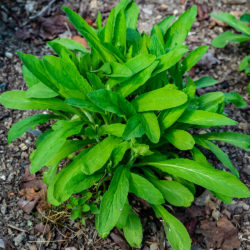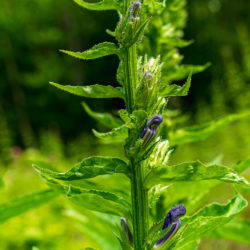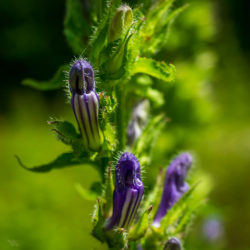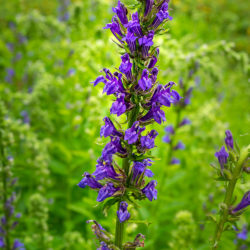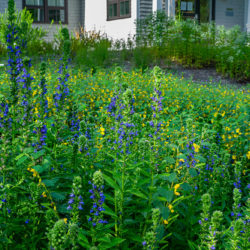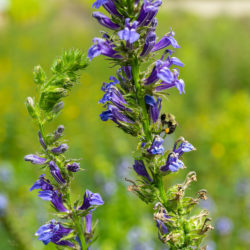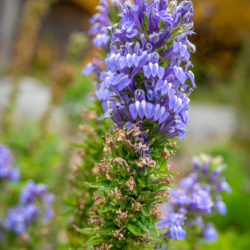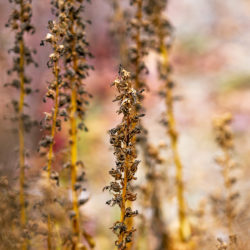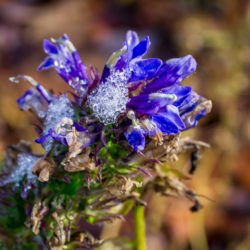Etymology
Lobelia is the Latin honorific for late 16th-century French botanist Matthias de l’Obel; siphilitica is from Latin, referring to its past (ineffective) use as a cure for syphilis.
Native Habitat
Open, moist woodlands, marshes and meadows.
Garden Uses
Lovely in rain gardens, and moist meadows or borders. A perfect counterpoint to yellows and golds of late summer. Will grow in sun or shade. Not drought tolerant; keep soil moist.
Overview
A showy, late summer wildflower, growing to 2 - 3 ft in height, with many small lavender-blue flowers in elongated clusters along an erect stem. Not a true perennial, as individual shoots and associated roots die post seed-set, but essentially perennial in that new growth roots each year from lower leaf axils.
Leaves and Stems
Stems are stiff and upright, tend toward non-branching, and typically reach 2 - 3 feet in height. Leaves (up to 5 inches each) are simple, alternate along stem, lance-shaped and finely toothed. Leaves and stems are generally light green.
Flowers
Blue to purple (occasionally white) bilaterally symmetrical flowers grow in the upper leaf axils along the stem to form a dense terminal raceme. Each small (1/2-1 inch) flower is split into 2 lips, with the upper lip divided into 2 segments, and the more prominent lower lip into 3. The lips fuse into a tubular shape. Often blooms until frost at the Native Garden.
Fruit/Seed
Capsule (1/2 inch) splits when dry to release small seeds. This plant is a prolific self-seeder.
Wildlife Associates
Attractive to hummingbirds and insect pollinators, especially native bees. Deer resistant.
Propagation
Divide clumps in spring, or collect seeds in autumn and scratch stratify (2 months at 40 degrees) on soil surface.
Ethnobotanical Uses
All parts are considered poisonous to humans if ingested in quantity.
Garden Location
Library Garden (see garden map)
Sources
Lady Bird Johnson Wildflower Center
Plant Profile by Kate O’Dell

